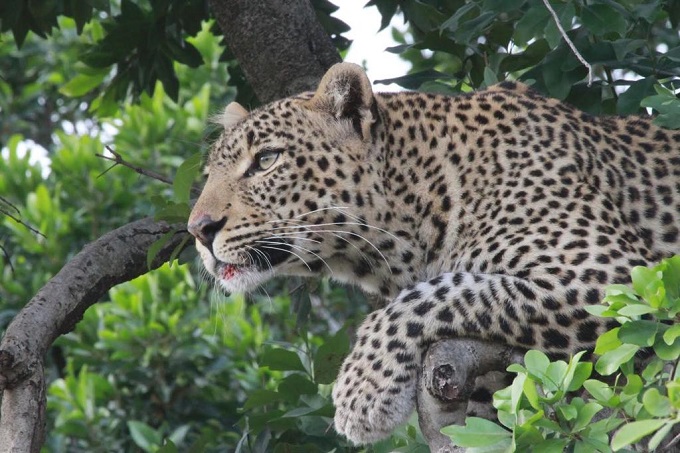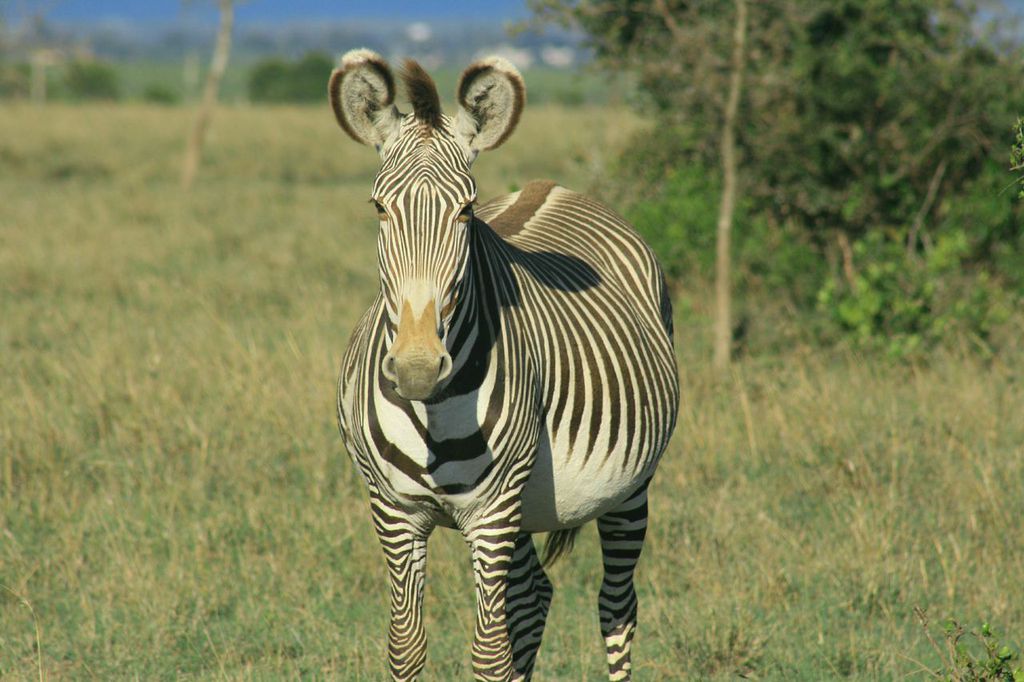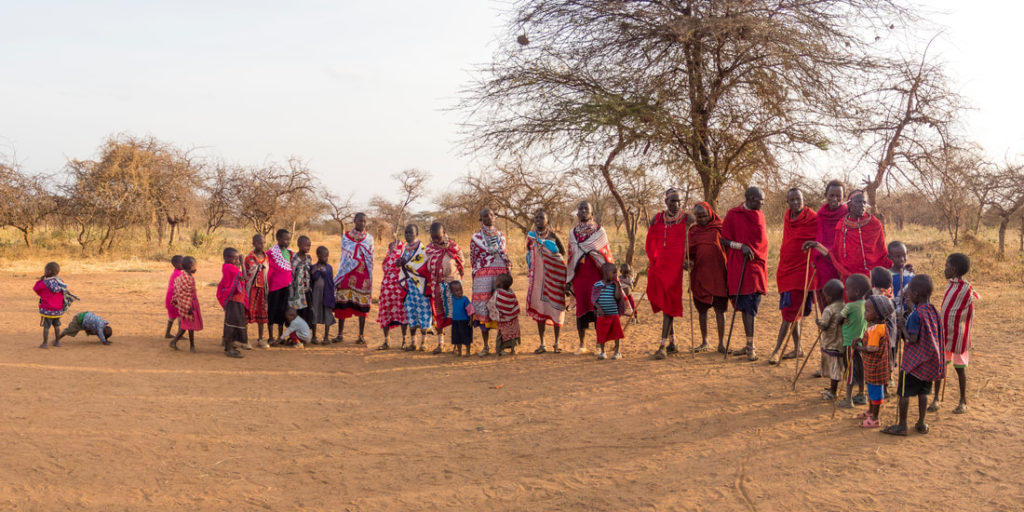
Our guest Clinton Richardson meets the Maasai people that live and work near Porini Amboseli Camp in Selenkay Conservancy …
* * * * * * * * * * * * * * * * * * * * * * * *
This series of blogs will take you on Clinton’s safari in Kenya as he travels from Atlanta (USA) to Nairobi National Park, Selenkay Conservancy (Amboseli), Ol Pejeta Conservancy (Laikipia) and Olare Motorogi Conservancy (Maasai Mara). Let’s join him on his journey as he shares his insights into the conservancies, Porini Camps and the people (and animals!) that he meets along the way. All images are from Clinton’s TrekPic.com photo site. Blog entries are from his Venture Moola blog at ReadJanus.com.
* * * * * * * * * * * * * * * * * * * * * * * *
Our gracious hosts through most of our adventure were members of the Maasai tribe, a semi-nomadic people that reside near the game parks we visited. The picture above shows the people from a small village near the Porini Amboseli camp in the Selenkay Conservancy.
The Porini camps where we stayed were all located on land leased from the Maasai. Because the Maasai do not hunt wildlife, relying instead on the cattle they raise, the conservancies established by these leases make great places for safari camps. The safari camps are each very eco-friendly, relying on solar power and endeavoring to leave as small an impact as reasonably possible on the land.

Our visit to a small Maasai village started with these seven Maasai warriors. They met us during a game drive and, after a short introduction, walked us to their village. Their dress was bright, predominantly red, with lots of beaded jewelry. Their shoes were sandals made from old car and truck tires by a nearby merchant.

The walk was less than a mile on a dirt path. The village was surrounded by a chain link fence which we were told was purchased with the money from a gift and used to keep predators from raiding cattle from the village pen during the night.
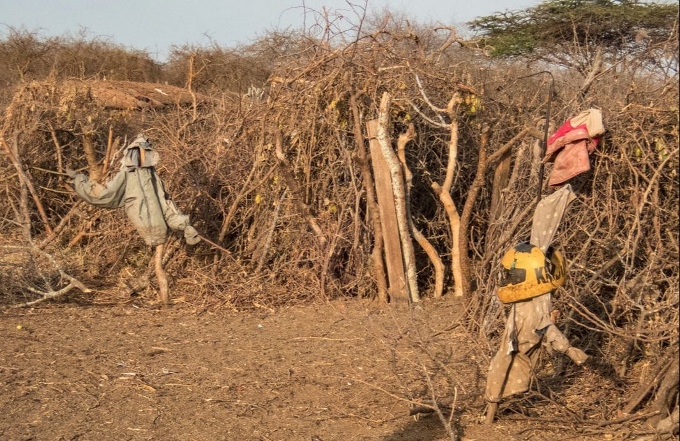
Entrance to the Livestock Pen with Scarecrows
The livestock pen was constructed of sticks with makeshift scarecrows near its entrance. The village also had dogs to help ward off predators.
The village itself consisted of the fence and several mud-constructed homes like the ones below. When we entered the village through the fence gate we were greeted by dozens of children and their mothers.
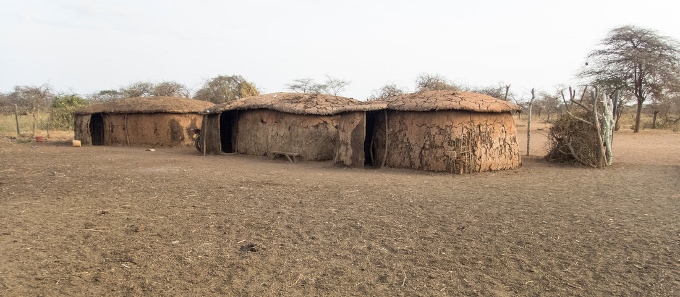
Introductions were made and then demonstrations of day-to-day skills. The women were as elaborately dressed as the men. Often with multiple and brightly colored bead necklaces, earrings and bracelets. The children were active and curious, exchanging phrases in Swahili and English with the guests.

The men showed how they made fire by spinning sticks on a small wooden pallet and then began a dance. The women, men and children chanted a tune while each of the men took a turn jumping straight up in the air and landing with great gusto. The children watched and practiced their jumps as the music continued.
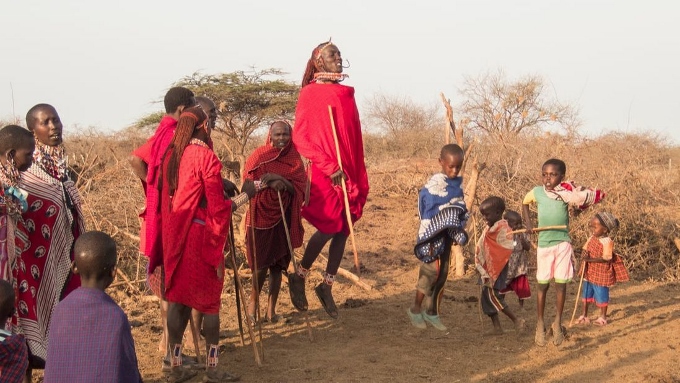
After our visit, the entire village walked us outside the fence and we stopped for the photo at the beginning of this blog. We then headed back to our Porini camp.
While we would see and interact with Maasai men every day – they ran all the camps and included all the game drivers and spotters – we would not see Maasai in their traditional life style again until late in our visit. On market day in the Maasai Mara, we would see Maasai warriors taking their livestock across the open plains to sell and trade.
These are the same plains where we watched lion and cheetah hunt. The Maasai warriors escorted their livestock on foot, carrying long stick poles as they walked.

The Maasai are under pressure to adapt to modern ways and many, including all those involved in running the safari camps, are actively adapting to the modern world that has invaded their lives. We will talk more about them and how they are adapting in future entries. For now, we leave you with this image of the Maasai herding their cattle and goats across the African plain.
First published 22 Nov 2018. All photos and text are © Clinton Richardson. All images are from his galleries at TrekPic.com
About Clinton Richardson
Clinton Richardson has been writing and taking photographs for decades. His books include the critically acclaimed 5th edition Richardson’s Growth Company Guide 5.0 and the award-winning book about social media and ancient coins called Ancient Selfies. His images, including images taken on his trip, can be viewed at TrekPic.com. His Venture Moola blog can be viewed at Readjanus.com.
See Other Blogs in this Series:
- Safari Countdown: Prepping for Kenya
- Safari 1: The Hunt
- Safari 2: Off to Nairobi
- Safari 3: Tented Camps & Conservancies
- Safari 4: Passports in His Underpants
- Safari 5: Night Lions to Amboseli
- Safari 6: Amboseli to Selenkay
- Safari 7: Pooh on You
- Safari 8: Eaten by a Lion?
- Safari 10: On the Move
- Safari 11: Crash on the Grass
- Safari 12: Sundowner Surprise
- Safari 13: Stalag Panzee
- Safari 14: Bump in the Night
- Safari 15: Dry Season Showers
- Safari 16: How Many Wives Would You Like to Have?
- Safari 17: Distracting His Highness
- Safari 18: How to Eat a Tree
- Safari 19: Hunting with Children (well, cubs!)
- Safari 20: Blue Jean Symphony
- Safari 21: African Nights
on Friday 23rd November 2018 at 12:01



